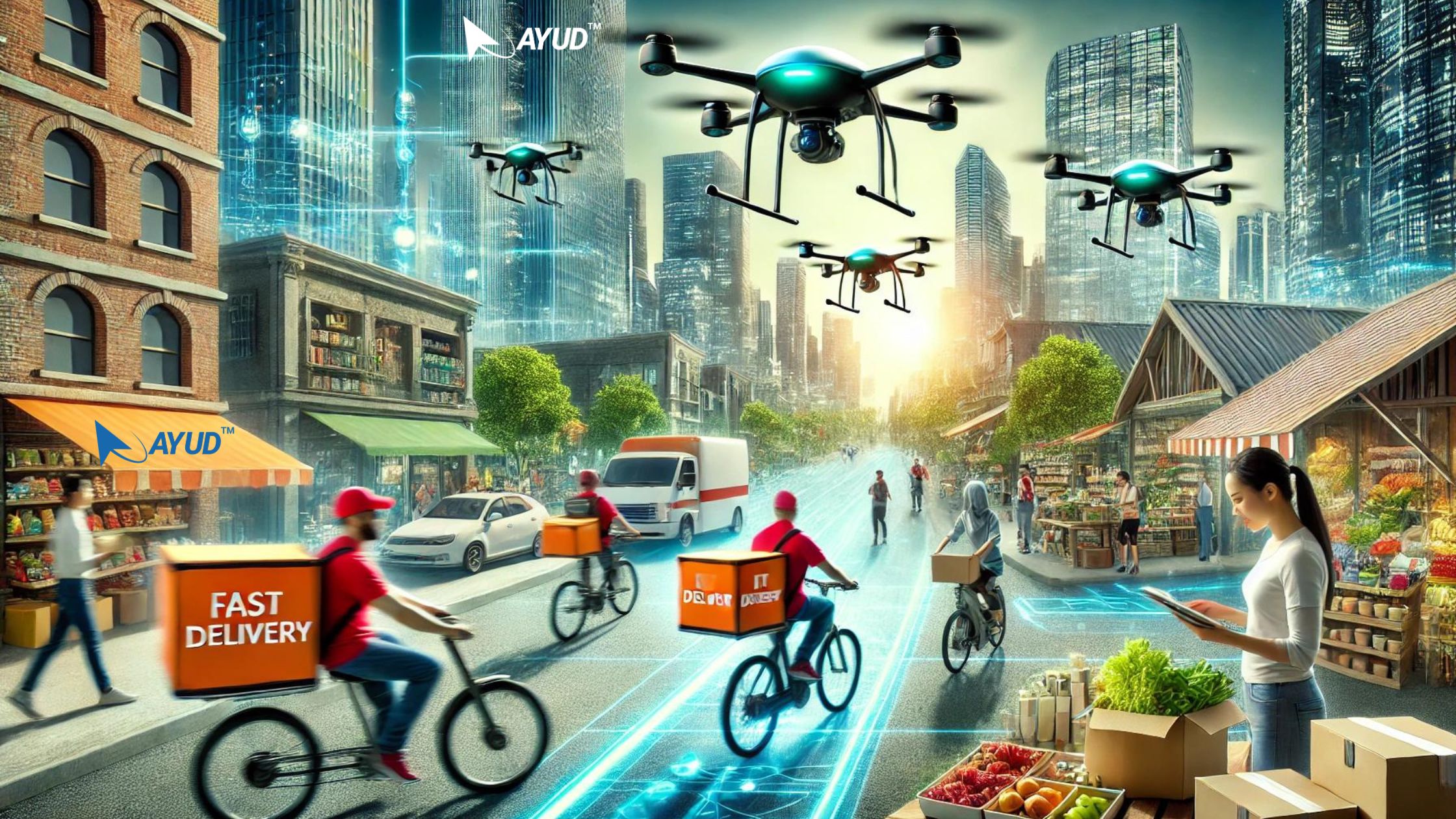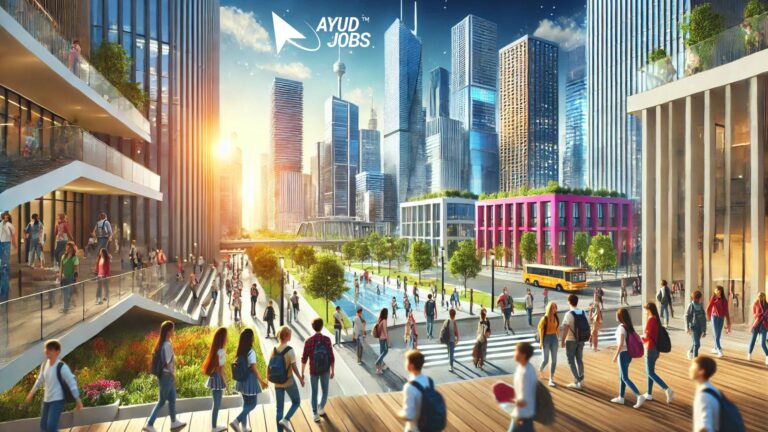How Quick Commerce is Changing the Game for Retail and Everyday Consumers
Quick commerce (q-commerce) is revolutionizing how people shop and how retail businesses operate. With a focus on delivering goods to consumers at lightning speed, q-commerce brings convenience, efficiency, and a new competitive edge to the retail market. How Quick Commerce is Changing the Game for Retail and Everyday Consumers. In this blog, we will explore how q-commerce benefits everyday consumers, its significant impact on the retail business, and why it is more than just fast delivery.
What Is Quick Commerce?
Quick commerce, often referred to as q-commerce, is the next evolution in online retail. It takes e-commerce a step further by offering delivery services within an hour or even minutes. Unlike traditional e-commerce, which may have delivery windows of days or weeks, q-commerce is all about speed and accessibility.
1. The Convenience Factor of Q-Commerce
One of the biggest selling points of quick commerce is its convenience. For consumers, it means no more waiting for days for a delivery. Imagine running out of a critical household item, such as baby diapers or medicine. Instead of driving to the store, consumers can place an order online and receive the product within minutes.
Real-time Example: Instant Groceries at Your Doorstep
Let’s consider Sarah, a busy mom of two. One evening, she realized she was out of milk and diapers. Instead of bundling her kids into the car for a late-night run to the store, she used a q-commerce app. Within 20 minutes, she had everything she needed delivered to her doorstep, avoiding the hassle and saving time.
Impact on Life: Quick commerce has improved Sarah’s daily life, allowing her to manage family responsibilities more efficiently. She can now focus more on her children rather than errands.
2. How Quick Commerce Helps People
A. Saves Time and Energy
Consumers today are busier than ever. Between work, family, and personal obligations, time is a precious commodity. Quick commerce eliminates long delivery wait times and helps people get what they need fast, without having to leave their homes.
Q-commerce is especially useful in metropolitan areas where traffic can make even short trips to the store a hassle. This saves people not only time but also energy, allowing them to focus on more important tasks.
B. Solves Emergency Needs
In times of urgency, q-commerce is a lifesaver. Whether it’s an unexpected guest requiring extra groceries or a forgotten ingredient while cooking dinner, q-commerce can deliver what’s needed quickly. This fast service ensures people are never left in a lurch.
Example: Think about the last time you had an urgent requirement, such as cold medicine late at night. Q-commerce fills that gap, providing peace of mind to consumers.
3. The Big Impact on Retail Business
Q-commerce has a transformative effect on the retail landscape. Businesses are adapting quickly to this trend, restructuring operations to meet the demand for ultra-fast deliveries.
A. Shift Toward Hyperlocal Supply Chains
Traditional supply chains are being disrupted by q-commerce. Retailers are now focusing on hyperlocal fulfillment centers to meet the immediate delivery expectations of their customers. These smaller warehouses are strategically placed in urban areas to ensure products can be delivered swiftly.
By leveraging hyperlocal centers, businesses can reduce shipping times and improve customer satisfaction. This is particularly beneficial in the grocery, pharmaceuticals, and personal care sectors, where instant delivery can be critical.
4. Job Creation in the Gig Economy
The rise of q-commerce has also led to job creation in the gig economy. Companies offering these services often rely on independent delivery drivers to complete deliveries. This model not only helps businesses scale operations but also provides income opportunities for people seeking flexible work.
Real-time Example: The Story of Tom
Tom, a part-time student, began working as a delivery driver for a quick commerce company to support his education. Because of the flexibility q-commerce offers, he can work between classes and earn a steady income. For Tom, q-commerce has been a game-changer, allowing him to balance work and studies.
Impact on Life: Tom now manages his time effectively, earning while studying, without committing to a rigid work schedule.
5. Impact on Traditional Retail
A. The New Retail Landscape
Q-commerce is pushing traditional retail businesses to rethink their strategies. Brick-and-mortar stores are now combining physical shopping experiences with digital platforms to offer fast delivery options. This hybrid approach helps businesses stay competitive and caters to the growing demand for convenience.
B. Challenges for Small Retailers
While large companies are quickly adapting to q-commerce, smaller retailers may face challenges. To remain competitive, they need to invest in technology, logistics, and partnerships with delivery services. However, for those that can adapt, q-commerce presents an opportunity for growth.
Example: Small grocery stores partnering with delivery platforms can expand their customer base and meet the growing demand for fast deliveries, even without a significant logistical overhaul.
6. How Q-Commerce Is Shaping the Future of Retail
A. Sustainable and Efficient Operations
With the rapid rise of q-commerce, businesses are focusing on making their operations more efficient. Technologies such as drones and autonomous vehicles are being tested to optimize deliveries. The future of q-commerce may see a blend of human and AI-driven operations.
Additionally, businesses are prioritizing sustainability. How Quick Commerce is Changing the Game for Retail and Everyday Consumers. Quick commerce companies are adopting green packaging, electric delivery vehicles, and more eco-friendly practices to reduce their carbon footprint.
B. The Role of AI and Automation
Artificial Intelligence (AI) is playing a significant role in enhancing q-commerce. From predicting consumer demand to managing inventory and optimizing delivery routes, AI helps businesses deliver faster and more efficiently. Automated systems will likely become a standard feature in the quick commerce industry in the years to come.
7. Challenges and Solutions in Quick Commerce
A. Handling High Customer Expectations
With the promise of fast delivery, customer expectations are higher than ever. Retailers need to maintain high service standards, ensuring that products arrive on time and in good condition. Companies are investing in logistics technology and improving inventory management to meet these expectations.
Real-time Example: Facing the Challenge
A q-commerce company in New York faced challenges when demand spiked during the holiday season. Deliveries were delayed, and customer complaints increased. The company responded by hiring more drivers and using AI to better predict demand surges. By the next holiday season, they were ready to meet customer expectations.
Impact on Life: This story shows how businesses can overcome challenges by adapting quickly, ensuring that customers still enjoy fast and reliable services.
Conclusion: The Future of Retail Is Quick
Quick commerce is not just about fast delivery—it’s reshaping how we live, work, and shop. By providing convenience, efficiency, and instant solutions, q-commerce has become an integral part of modern retail. Its impact on businesses is profound, pushing companies to innovate, embrace new technologies, and focus on customer satisfaction.
Consumers can look forward to even faster, more sustainable delivery options in the future. Retail businesses that successfully integrate q-commerce into their models will thrive in this new landscape. How Quick Commerce is Changing the Game for Retail and Everyday Consumers.
#QuickCommerce #FastDelivery #RetailRevolution #EcommerceTrends #QCommerceImpact #RetailBusinessImpact #HyperlocalFulfillment #FastDeliveryServices #QCommerceFuture #ayud #ayudjobs #askayud #MultiLanguageSupport #ResumeBuilder #gotestit #ayudian #ayudblog #ayudcareer
How to Use Ayud : A Comprehensive Guide
Join our what’s app channel for timely updates








For banking sector what is next course?
How to write banking exam?
What are the uses of banking exam?
What type of question they will ask?
https://ayudjobs.blog/how-competition-fuels-success-in-competitive-exams-a-guide-for-students-and-beyond/
How to write the exam of bank?
What to do next after PUC?
what about the commerce?